the photobooks of 2014
Posted: 22/12/2014 | Author: microcord | Filed under: Books | Tags: "best of" lists, 10X10 Japanese photobooks, Adam Lach, Alexis Maryon, Araki Nobuyoshi, Arimoto Shinya, Arjan de Nooy, Calin Kruse, Chris Steele-Perkins, Christopher Herwig, Cindy Deachman, Clément Paradis, Derk Zijlker, Eva Lipman, Gerry Badger, Hara Mikiko, Homer Sykes, Jens Olof Lasthein, Ken Grant, Ken Graves, Kikai Hiroh, Kuwabara Kineo, M Bruce Hall, Martin Parr, Mary Berridge, Miloň Novotný, Nick Danziger, Ogawa Yasuhiro, Romain Gavidia, Rory MacLean, Tony Fouhse, Yanai Yasushi, Zhang Xiao |9 CommentsNo “best of” nonsense here. Instead, here are all of the photobooks (defined broadly) published in 2014 (narrowly) that I acquired.
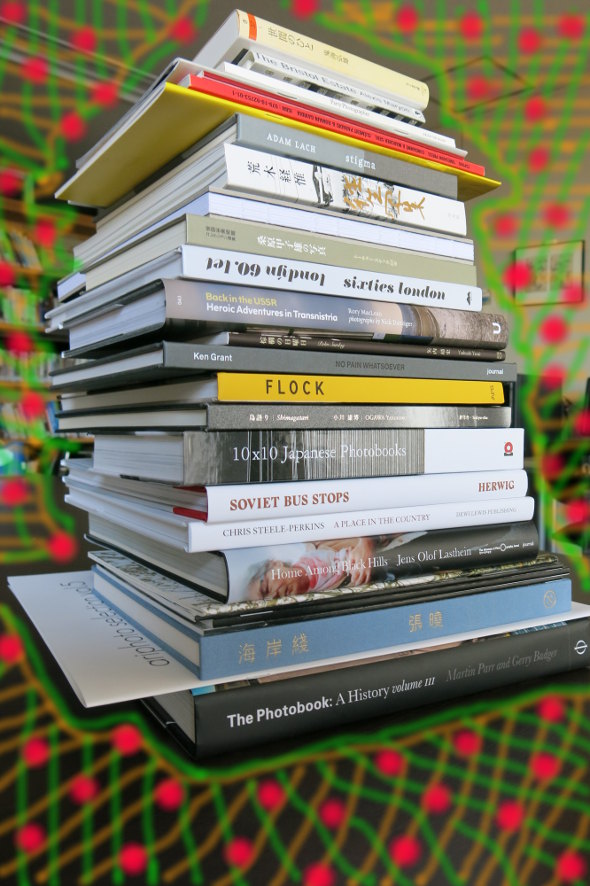
(Keep in mind the proportions of the pile above: the photos below of the individual books are at wildly different scales.)
Rob Hornstra has given some handy tips on how to get on end-of-year lists. Such as:
A GOOD NETWORK (send them stuff, beautiful things, [illegible], social media)
(Or that’s what Colin Pantall says.)
No, no, all but one of this lot, I bought. Aside from books duly paid for, none of the photographers/writers has sent me a beautiful thing, honest.
Each of the books is good in its way, but I do have qualms about having acquired the whole lot: I don’t have the space. (Writing them all up here might somehow nudge me towards buying fewer next year.)

As Araki approaches 75, he’s lost his wife, his cat, his sight in one eye, and his house; he’s come through a bout of cancer; and his sense of mortality is acute. But he still seems energetic and satyric. So he’s a lovable-old-rogue national treasure. (The type isn’t rare in Japan, but previous national-treasure photographers have tended to devote their later years to creating somniferous series of Buddhist statuary and so on.) This year Araki’s had a big show at the Toyota Municipal Museum of Art, Niigata City Art Museum, and (Ginza) Shiseido Gallery, which is about as good as it can get as long as the already clean, fresh and well-appointed Tokyo Metropolitan Museum of Photography is inscrutably “closed for renovations”. I haven’t yet seen the show, but here’s its book.
According to Wikipedia, ōjō means “rebirth in the Pure Land of Amitabha Buddha” (not to be confused with the Pure Land of Sanrio); those in search of naked ladies will be seriously disappointed. But we do get about three hundred pages of photos, followed by sporadically interesting texts (Japanese and English). Of course there’s Yōko; there are stages in the life of Araki’s cat; the toy-strewn roof, and other series one might expect. There’s some (not enough) of the very early Ginza hipshots. There’s a large chunk of not-so-special photos of people sitting in the train. There’s Tokyo seen through smashed glass. (Apparently the Master smashes a lens annually to commemorate the bombing of Hiroshima, or something. I don’t understand how both a broken lens element [or filter] and much of a townscape could simultaneously be more or less in focus on 24×36 mm; but I have worse things to smash with a hammer and so I’m not going to experiment.) And there are other pleasures. And plenty of the totally humdrum. (There’s a photo from last year of Araki with Umezu Kazuo. Yes I know what the hand contortion refers to, and it’s good to see old boys enjoying themselves, but . . . that’s it.) However, with Araki, it’s “the greater the quantity, the more arākist”. Or so I’m repeatedly instructed.
Well, disregard any content that doesn’t float your boat, and enjoy what does. And don’t rush to dispose of your other Araki books. Naked ladies aside, I infer that images of the world outside Japan aren’t thought suitable for the afterlife, or for whatever reason we get nothing of Seoul, from where, unburdened by celebrity, Araki has been able to bring back good photos.
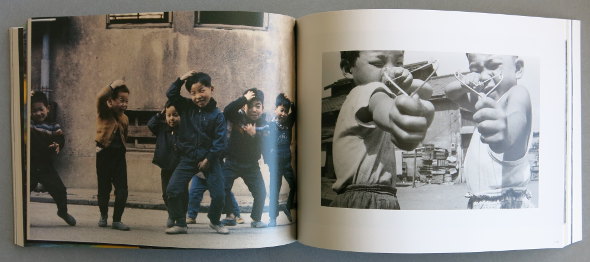
Araki Nobuyoshi = 荒木経惟. 往生写集 = Ōjō shashū: Photography for the afterlife. Tokyo: Heibonsha. ISBN 978-4-582-27811-8.

The bunkobon format (A6, or 105×148 mm) isn’t obviously suited to photobooks. Still, some of the various bunkobon publishers give it a try now and again. And the few examples can be long-lasting: all four volumes of a Chikuma set on the Japanese photos of Kimura Ihei are still in print 19 years after publication.
Here’s the first bunkobon by Kikai: more photos in the series variously titled Kings, Persona and Asakusa portraits than ever before gathered in a single book. (The title this time around means “people of the world”, or more precisely those of the loka, whether singular or plural.) It has close to four hundred photos; and while there’s no real black in them the printing is detailed, so the book is no mere novelty. If you want maximum Kikai portraiture per yen or gram, this is the book for you. I enjoy dipping into it and encountering photos I’ve not seen elsewhere. For example, of a girl with a zip-fastened bag in the shape of a hand grenade — yes, in Japan even a hand grenade may be kawaii — and, mysteriously, the character 魃 (hiderigami, a demon of droughts), tattooed on the back of her hand, staring at the camera.
As usual the photos are all captioned; unsurprisingly there’s not a word of English in the book.
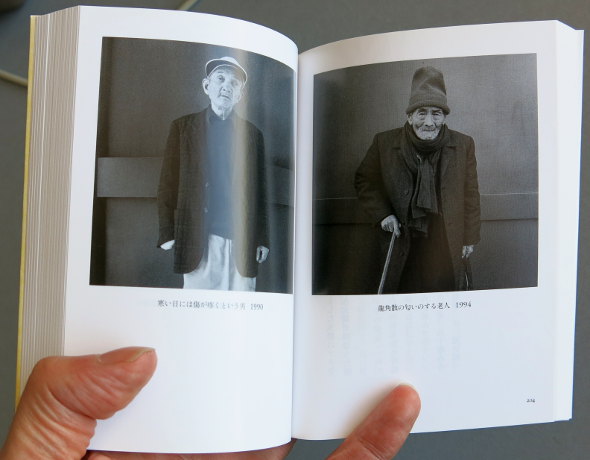
Kikai Hiroh = 鬼海弘雄. 世間のひと (Seken no hito). Tokyo: Chikuma Shobō. ISBN 978-4-480-43156-1.
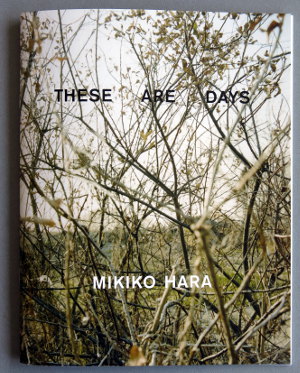
These are days is just the second collection by Hara Mikiko. Could it be a response to Ishiuchi Miyako’s cromulently titled One days? Whatever Hara was thinking of, we get 25 colour photos from her 6×6 Super Ikonta rangefinder, well printed but in a stapled booklet and priced to go. (Another publisher would have given it a cloth cover, added “limited, numbered and signed” mumbo-jumbo, and trebled the price.) Most of the photos are in the “outtakes from something that might be interesting” genre: straggly plants, people with their eyes closed, the out of focus: Tokyo’s photobookshops have tons of stuff that looks like this and is negligible; but maybe because Hara takes her time and is selective, it starts to work here.
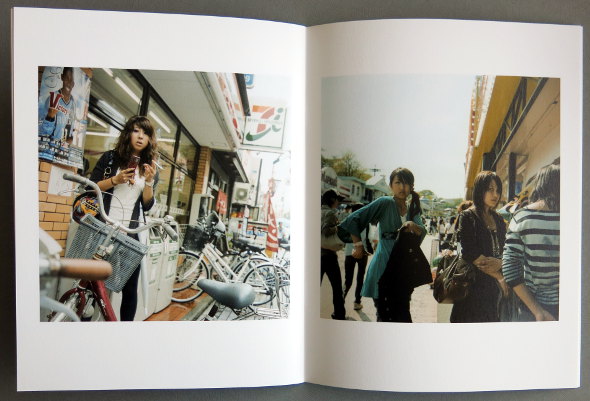
Hara Mikiko = 原美樹子. These are days. Tokyo: Osiris. ISBN 978-4-905254-04-1.

Ogawa Yasuhiro is best known for Slowly down the river. His new book, Shimagatari (“island tale(s)”) looks very different: it’s in black and white, it’s of more or less depopulated places, and with its near-black expanses and tilted horizons it could have come from the 1970s. Ogawa is drawn to the islands; and what with economic gloom, rural depopulation, the decline of fishing, and perhaps also the recent appetite of the book’s editor (Sokyusha’s proprietor) for photos of decaying provincial Japan. But unlike the monotonous majority of recent books of decaying provincial Japan, this one took almost a decade to create and shows great variety. For each of the circa 65 photos, island and year are specified; but there’s almost no other explanation, leaving the reader (or this reader) eager for more information. And also eager to visit some of these islands.
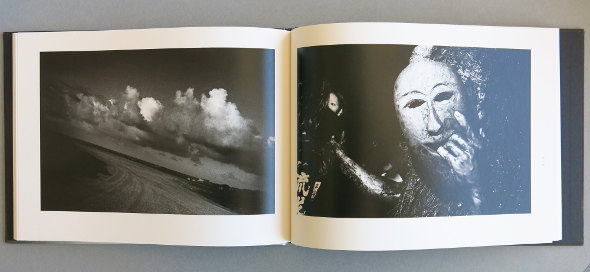
Ogawa Yasuhiro = 小川康博. 島語り = Shimagatari. Tokyo: Sokyusha. ISBN 978-4-904120-43-9.
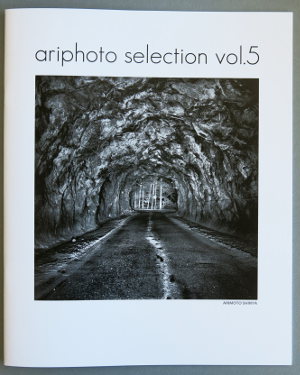
Each “volume” of Ariphoto selection is a large-format (somewhere between B4 and A3) booklet of twenty pages, one excellent B/W photo on almost every page. The first two are of Tokyo (mostly Shinjuku) street portraiture, the third took a diversion to Tibet, and the fourth came back to Shinjuku. (All four are now sold out.) But now Ariphoto selection 5 depicts Okutama, Tokyo’s fairly wild west — primarily, its insects. The insects (and the occasional spider, etc) are shown close up, in detail; but it’s further from conventional insect photography (or Larry Fink’s mantis photography) than from the explorations in pattern by the restless Yasui Nakaji. For anyone who appreciates B/W and has at least a little curiosity about bugs. As always, you could buy two copies, cut the pages apart, and frame them.
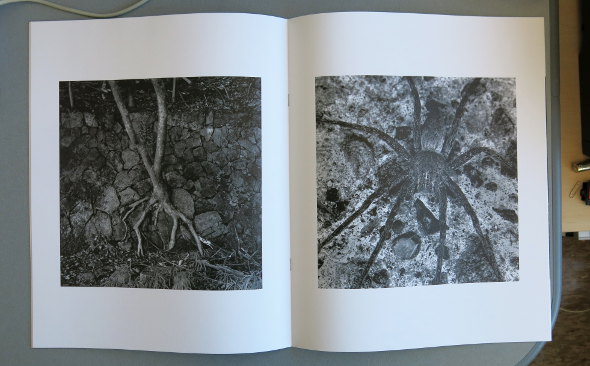
Arimoto Shinya. Ariphoto selection 5. Tokyo: Totem Pole Photo Gallery.
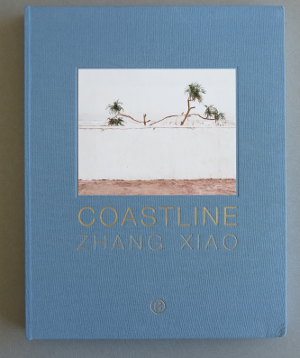
In 2011 Zhang Xiao won the Prix HSBC, bringing with it Actes Sud’s publication of the book Coastline. For this series he went all along the coastline of China (or so I’ve read). Some photos are of townscapes that aren’t obviously close to the sea, but these are a minority. As “the Chinese” are often depicted toiling away (when not lost within more or less surreal cityscapes), it’s refreshing for Chinese people to be depicted doing nothing in particular.
Though the Actes Sud Coastline is still in print, along comes a new and larger book of the same title. The earlier Coastline gives you about forty photos for an RRP of €25; the later 118 for $65. There’s a lot of overlap; either one book should be enough.
The sunshine is muted, whether by loess or smog, and the colour balance is slightly pinkish. The photos tend toward seaside “street”, with indecisive moments aplenty. There are some very odd scenes indeed, for a example one with a dozen or so model elephants and hundreds of model bison seemingly abandoned in a park.
The new book is “Swiss bound”: this is supposed to “look handmade yet totally refined”, but to me it just looks like a regular hardback whose front endpaper someone has sliced with a box cutter; I wonder how well the book will last if shelved vertically. That matter aside, it’s a very handsome package.
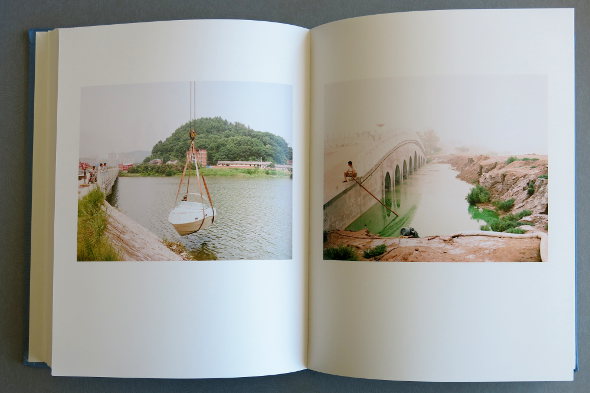
張曉 = 张晓 = Zhang Xiao. 海岸綫 (海岸线) = Coastline. Sham Shui Po, Kowloon: Jiazazhi Press. ISBN 978-988-12631-5-5. Book of colour photographs, no captions. With a booklet containing texts in both Chinese and English.
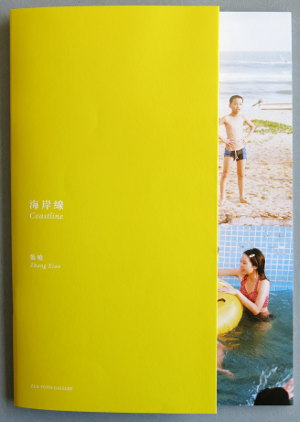
When Zen Foto Gallery (Roppongi) gave Zhang a show (September–October), it published a booklet to accompany this. I bought the Jiazazhi Coastline at the show. But then, because I’m either an idiot or (shudder) a collector, I also bought this booklet, whose content is anyway in the book. Its circa 35 pages present about 26 photos. The photos across double-page spreads survive this fairly well. Printing is good too, so it’s a decent substitute for one or other of the Coastline books.
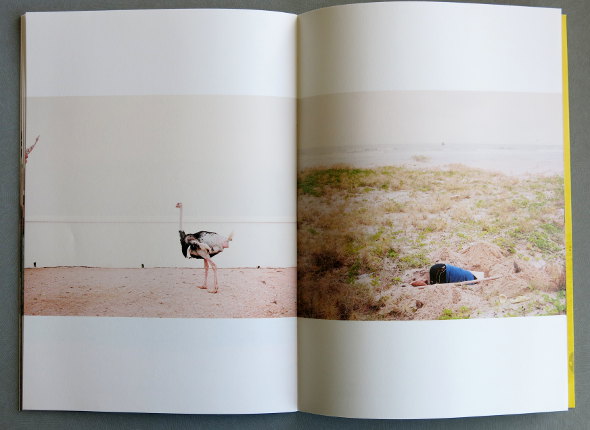
Zhang Xiao. 海岸線 = Coastline. Tokyo: Zen Foto Gallery. Texts in Japanese, Chinese and English.
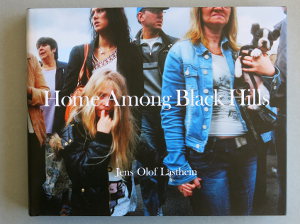
Jens Olof Lasthein is the master of colour panoramic “street” (which can be sampled within the patchy but worthwhile Street photography now). Here’s his report from Charleroi, whose fabric remains much as I hazily remember it, where times are hard but where the streets and bars remain full of life.
Lots of photos here: I’m not going to count. As in Lasthein’s Moments in between and White Sea, Black Sea before it, every photo is split across two pages. The photos survive the mistreatment; but quite why a photographer and three respected photobook publishers (Journal, Max Ström, Dewi Lewis) would agree to screw up photos in this way is a mystery. And similarly to its predecessors, this book has saturated colours. It comes with diary entries by Lasthein and an essay by Mano Calvo (the Charleroi restaurateur?), all worth reading.
All those brick terraces — I suddenly think of Byker, and how the new photography in Byker revisited is virtually all indoors. What would Sirkka-Liisa Konttinen say about this book? Now there’s a photography talk show I’d attend.
Or rather, I’d attend it if it were held in Tokyo — and I see no prospect of that. Lasthein writes that “This project came into being during a residence initiated by Musée de la Photographie in Charleroi. . . .” The Museum of Photography, Seoul adds that Lasthein exhibited there in 2008; and as this new book has texts in Swedish, French, English and Korean, presumably there’s a new exhibition there too. So the Charleroi museum and the Seoul museum differ from Tokyo’s timid photo museum, where (when it’s open at all) photography by foreigners seem to have to be of Japan, very famous, by the dead, prettily dull, or some combination thereof.
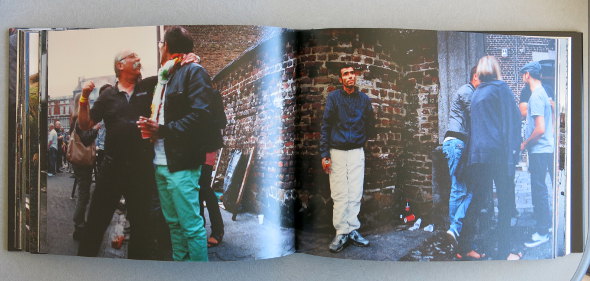
Jens Olof Lasthein. Home among black hills. Stockholm: Journal. ISBN 978-91-981253-6-8. Text in English, French, Swedish and Korean.
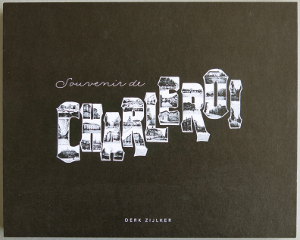
We’re among black hills again. “Charleroi was voted ‘ugliest city in the world’ in 2008 by readers of a Dutch newspaper, De Volkskrant”, starts Derk Zijlker. This of course drew him to Charleroi, which he found himself liking more and more. Souvenir de Charleroi combines townscapes, street portraiture, and yes, “street”, for a total of about eighty photos of this remarkable city and its outskirts. But even in the “street”, Zijlker keeps his distance, so this book complements Lasthein’s bulkier one. A (well printed, colour) photo per page, which is how a far greater percentage of photobooks should be — if the photos are worth looking at, as they definitely are here. Lots of little pleasures here: one of my favorites is simply of a man enjoying a cig as he props up the « taverne de la place ‹Chez les Belges› ».
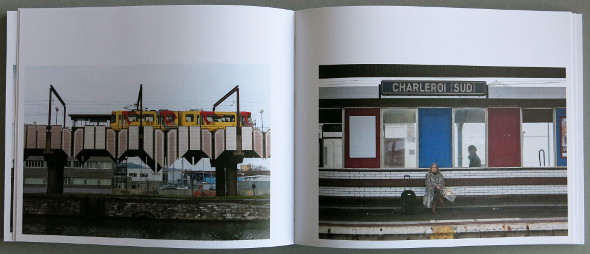
Derk Zijlker. Souvenir de Charleroi. Amsterdam: Derk Zijlker. ISBN 978-90-822856-0-4. No captions, texts in French and English.
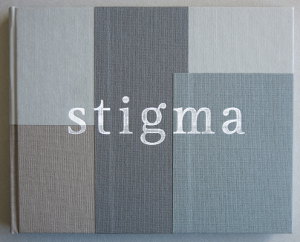
Stigma is a compact book about a group of Gypsies from Romania living in scrubland in suburban Wrocław. (Maybe there’s a desire to avoid confusion with “Romania” and “Romanian”, often mentioned here; but for whatever reason “Gypsy” is the term consistently used in the book, so I’ll use it here.) They’re in Poland because they heard it’s possible to make a living there; even when this turns out to be largely untrue, and even though they’re stigmatized by Polish Gypsies as well as other Poles, life is still better than in Romania. (Reality check from Wikipedia for those who associate Romania with sunbathing on the Black Sea: while the record low in Wrocław is −29°C, that in Iași is −36°C.)
The book has about 48 colour photos; a couple of these take up double-page spreads but most occupy a single page. There are individuals, groups, interiors, people within their self-made huts, the huts’ insides and outsides, and more: it’s well rounded. A few photos are, by the more obvious criteria, boring. (Part of a tree at night, with a couple of lights in the distance. Er, yes.) Perhaps it’s the colours, perhaps it’s the editing; but for whatever reason, they’re all more or less absorbing and (unusually!) don’t strike me as mere filler.
The Gypsies’ circumstances are pretty miserable. Their ramshackle huts stand on what looks like wasteland. (Have there been chemical spills there?) A man holds up a rat by its tail. A baby’s cot is a very used Ikea bag. But the Gypsies get on with life. Misery isn’t on display.
The photos alternate with first-person accounts by the Gypsies (transcribed by Lach himself, Darek Koźlenko and Katarzina Dybowska). Their lives may not be solitary, but they sound intermittently nasty and brutish. It’s these accounts that explain the book’s blunt title: the Gypsies are despised for not working (and because of other stereotyping), want to work, but can’t get work because they’re despised. (And they may be incapable of the kinds of work that are on offer, having had little or no experience of anything like it. Cf the plight of some of the North Koreans who’ve made it to the South.) There’s plenty of food for thought here.
The printing here is excellent. (Credit where it’s due: Chromapress.) Physically, the book is elaborately assembled, with gatefolds and a patched-up cover. (Credit again: Poligrafia Bracia Szymańscy.) Good, but I hope the material comes out later within an edition of thousands rather than hundreds, so that more people can read it.
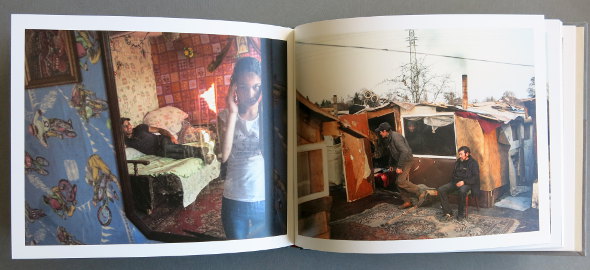
Adam Lach. Stigma. Warsaw: Adam Lach. ISBN 978-83-939574-0-8. Text in English. (There’s also a Polish-language edition.)
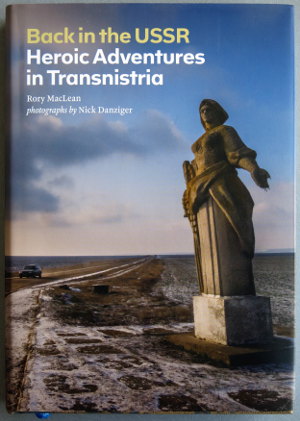
Back in the USSR: Heroic adventures in Transnistria are cultural learnings of the Pridnestrovian Moldavian Republic for make benefit glorious kickers of start at unbound.co.uk, and you too. Writer and photographer examine a sliver of a smallish nation . . . yes, it does sound familiar:
| Transnistria | Abkhazia | ||
|---|---|---|---|
| Quasi-nation | Area | 4,162 km² | 8,660 km² |
| Population | 505,000 | 243,000 | |
| The | easternmost | westernmost | |
| part of | Moldova | Georgia | |
| but friendlier to | Russia | Russia | |
| Major language | Russian | Russian | |
| Major ethnicity | neo-Soviet | Abkhazian | |
| Book | Title | Back in the USSR | Empty Land . . . |
| Pages | 146 | 272 | |
| Photos | a lot | 102 | |
| Writer | Rory MacLean | Arnold van Bruggen | |
| Photographer | Nick Danziger | Rob Hornstra | |
| Top billing | writer | photographer | |
| Price | £20 | €35 |
Although the two are very different in tone, as is evident from the very start:
Sunlight sparkles off the broad Dniester River. Grapes glisten in verdant vine terraces above Kamenka. Smugglers’ tracks wind across the snow and into silent woods. Patriotic oligarchs in Gucci tracksuits hunt wild boar with ak-47s. A springtime breeze loosens the blossoms from the apricot trees, scattering them over Russian peacekeepers guarding old Soviet munitions dumps. At the Che Guevara High School of Political Leadership the party faithful learn how to launch ‘spontaneous actions’ while sustaining the half lotus yoga position.
The book is enjoyable if perhaps overly sprinkled with “patriotic Soviet captions approved by the Central Committee of the Communist Party of the Soviet Union for the 60th Anniversary of the Great October Socialist Revolution” and related jocosity. As we proceed, the quasi-nation sounds less like Abkhazia (or the much-photographed Nagorno-Karabakh) than Northern Cyprus. An elegant map at the front is marked with approximate directions and precise distances to Moscow, Monaco and Harrods, these being major destinations for the minority to whom the cash flows. And the photos? Townscapes, interiors, portraits: a portrayal of Transnistria that seems well rounded (though I’m not qualified to judge).
We read more than once that Transnistria is no North Korea. But the text doesn’t mention Danziger, or what the pair have done or plan to do together. I learn from the interweb that they’ve recently been to North Korea and had an exhibition of the results, for which there’s a catalogue: worth looking out for.
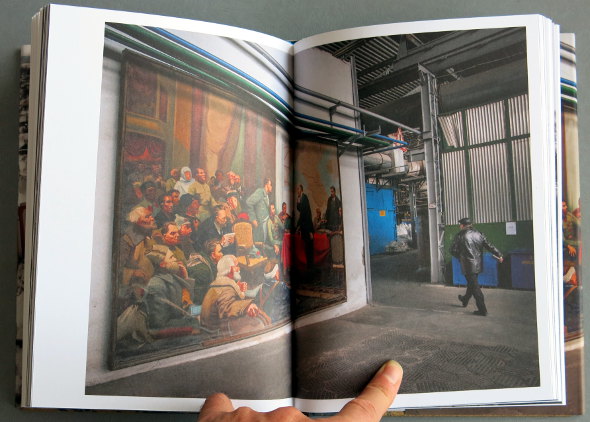
Rory MacLean and Nick Danziger. Back in the USSR: Heroic adventures in Transnistria. London: Unbound. ISBN 978-1-78352-062-6.
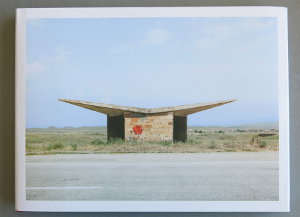
There’s something of a boom in photobooks of Soviet and (sometime) satellite architecture: Cosmic communist constructions photographed, Soviet modernism, Spomenik, Ostalgia, and more. Does the world also need a photobook that limits itself to Soviet bus stops? Yes of course it does, when the book is Christopher Herwig’s Soviet bus stops. Curious, eclectic, energetic — what Martin Parr is to photobooks, Herwig is to Soviet bus stops. While enough material for a fine photobook can be amassed in just one evening, for a project like this to be done well you need time, experience and knowledge. Herwig has travelled widely and found a great variety of bus stops; the book is amply sized and the better for it. He often gives both a frontal view of the bus stop and a view from a different angle, the combination making the bus stop a lot easier to imagine. Good design, good printing. There’s an excellent introduction by Vera Kavalkova-Halvarsson, about whom I know little but who should be invited to introduce more photobooks as well.
The book was already described as out of print when I first heard about it. I sent Herwig polite mail about it anyway, and months later was informed that a few more copies were available after all. Now it’s out of print again; but Herwig writes: “FUEL publishers are working on designing the next edition with hopes to have it in shops and available online by the fall of [2015].” The new edition should have Russian as well as English text, or anyway the photos should be known where they might have an effect (ideas).
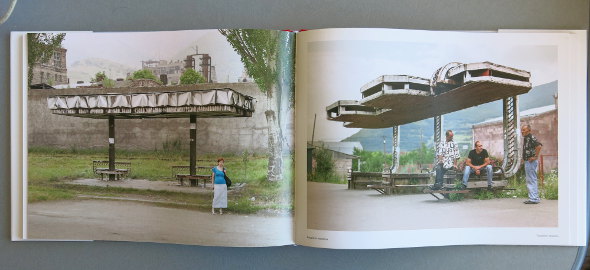
Christopher Herwig. Soviet bus stops. Brooklyn: Christopher Herwig. ISBN 978-0-692-02905-3.
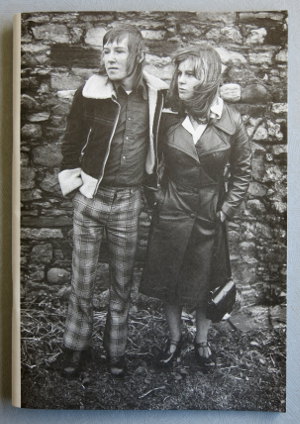
Homer Sykes’ 1977 book Once a year merits an augmented reissue from Steidl or similar; until that happens, his earlier work trickles out from Café Royal Books and now also in This is England from Poursuite, to accompany the exhibition he richly deserved in Britain but instead had in France. Sykes’s England (1970–1982) on show here is richly peopled and full of action (once-a-year rituals, of course, but also demos, parties, Bay City Roller appreciation): I wouldn’t want to live there, but I’d enjoy a visit. No duds in this stapled booklet of about thirty photos, and no design gimmickry; the design gets the job done in the most efficient way. Good, but something more lavish is deserved.
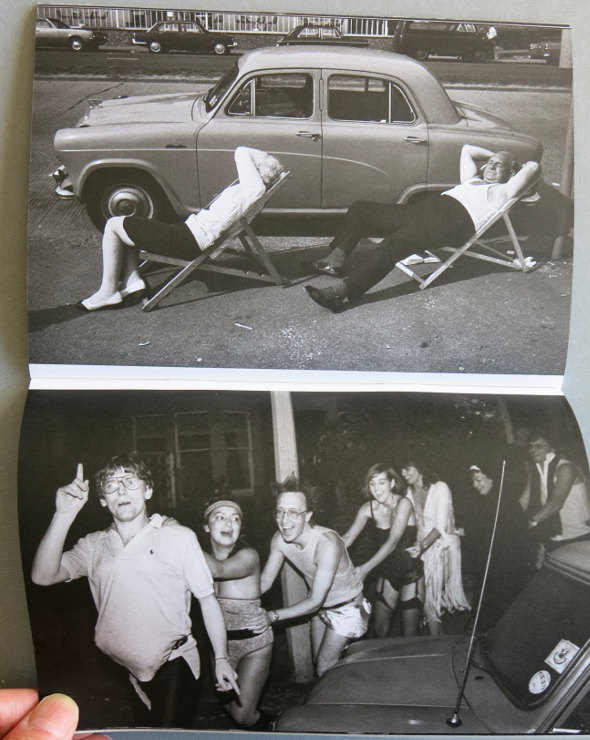
Homer Sykes. This is England. Paris: Poursuite. ISBN 978-2-918960-77-5. No text; captions in French only. (Perhaps I read somewhere that some copies had captions in English only, and perhaps I just think I did.) Already out of print.
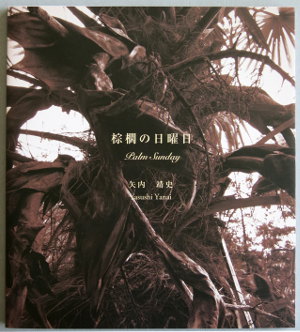
Yanai Yasushi’s Palm Sunday is an unassuming book of photos of sleepy suburban Fukushima City (and occasionally Kōriyama), from March to June 2012, in square-format black and white. This was just one year after disaster hit a nearby nuclear power plant. Yanai’s insomnia led to early-morning walks, and he found himself photographing views with palm trees, planted at a more optimistic time. There’s no palm monomania here, though: there are palmless views, there’s a close-up of a snail, and more. Captions (place and month only) and a short text in Japanese only. Printing quality is decent and the price is low; a quiet book for a quiet mood.
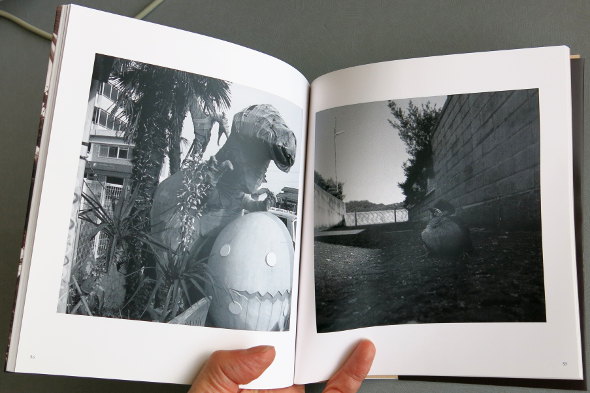
矢内靖史 = Yanai Yasushi. 棕櫚の日曜日 = Palm Sunday. Fukushima: 青蛙舎.
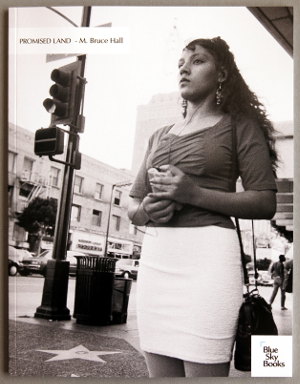
Promised land (title by Chuck Berry) brings street photography in LA, 1981 to 1992, by M Bruce Hall, as introduced by Blake Andrews. From Blue Sky Books, as again introduced by Blake Andrews. We read: “These titles are not available in any store or other online retailer—only through Blue Sky.” Or rather, only through MagCloud. Which in turn has become part of Blurb. So we shouldn’t be surprised that the 44 or so photos here are indifferently printed. It’s an odd collection of photos that do and don’t do something for me. The cover photo isn’t one of the strongest: there are enough photos inside that could be by Frank or Winogrand to make this a keeper.
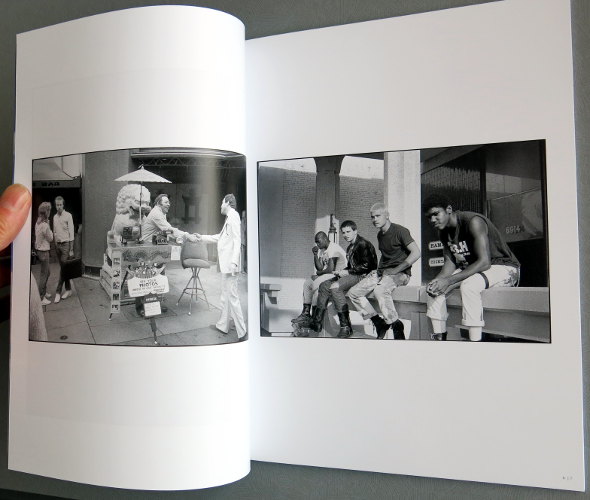
M Bruce Hall. Promised land. Blue Sky Books 7. Portland, OR: Blue Sky Books.
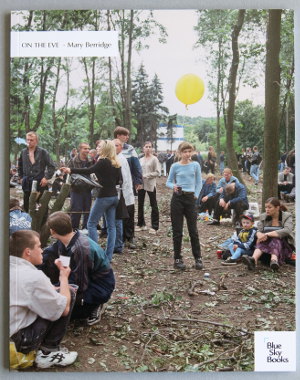
About 41 colour photos from 1998 of Moscow and environs, by Mary Berridge. The Soviet Union isn’t long gone, the Russian economy will soon collapse; there’s not a mobile phone in sight, and many of the people here stand, sit, wait, rest, or sleep. Quiet and satisfying street work here, with some surprises (eg an ancestor of Borat’s bear): it didn’t make much of an impact when I first saw it; but the more often I return to it, the more I enjoy it.
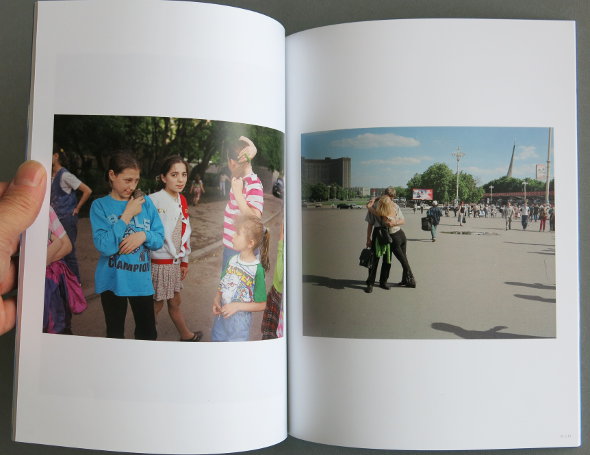
Mary Berridge. On the eve. Blue Sky Books 35. Portland, OR: Blue Sky Books.

About 68 B/W photos by Ken Graves and Eva Lipman of teenagers at proms. A wondrous pre-cellphone world where (I infer) adults could take photos of kids dancing, snogging, and passing out without anyone calling the cops on them. Some photos are more Winogrand, some are more Fink; whichever, every one is a delight. They merit duotone or better, but for now MagCloud will have to do.

Ken Graves and Eva Lipman. Proms. Blue Sky Books 23. Portland, OR: Blue Sky Books.
The title You scared the shit out of me, so I’m leaving is nowhere explained in Calin Kruse’s collection of photos of one or more strip clubs (and their surrounds) in an unidentified “hick town”. There are 44 or so spiral-bound leaves, so that almost every double-page spread either has one photo on the left and another on the right, or has a single photo broken across the middle — the break somehow not damaging the effect. (Once there’s a seeming parody of censorship, where a break neatly replaces a vulva.) There are no captions, except that a couple of signs (in German) are obligingly given English translations. The girls don’t look unhappy; the viewers aren’t always bedazzled but they’re well behaved (this is far from Meiselas’ Carnival strippers). The surroundings are grotty, as strip club surroundings always seem to be — and I’m puzzled by Kruse’s talk (both inside the handsome cover and on the web page) of “smooth smugness” and “family idyll” in the daytime. (Still more by his talk of “bigotry”.) The collection could have been slimmer, but there are some arresting photos.
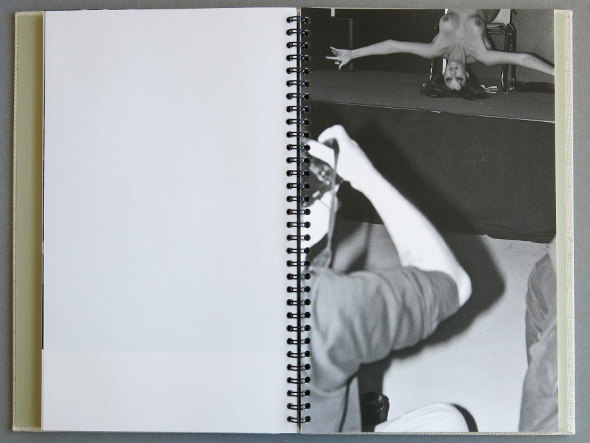
Calin Kruse. You scared the shit out of me, so I’m leaving. Leipzig: Dienacht.
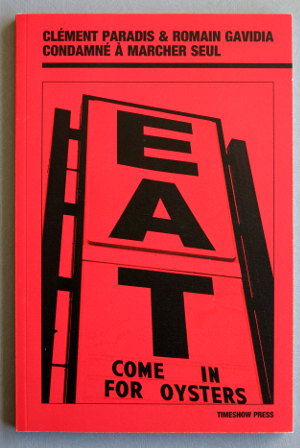
Clément Paradis provides the photos and Romain Gavidia the prose-poem for Condamné à marcher seul (“sentenced to walk alone”). The prose-poem is in French; but to aid the undereducated such as myself, it’s englished at the back.
Let’s go in, for oysters. These normally have a disastrous effect on me, but not here. Existentialism, or something like it, is alive if not completely well. Fuelled by booze, coffee and coffin nails, Gavidia’s narrator manages to get through the zombie-populated day, in the race against death. The black is very black; most of the photos are a little blurry. Yet a bottle of Martiniquais rum (“50% vol.”) is rendered in horrible clarity. My head is throbbing and tonight I think I’ll go to bed early.

Clément Paradis and Romain Gavidia. Condamné à marcher seul. St-Étienne, Loire: Timeshow Press. ISBN 979-10-97253-01-1.
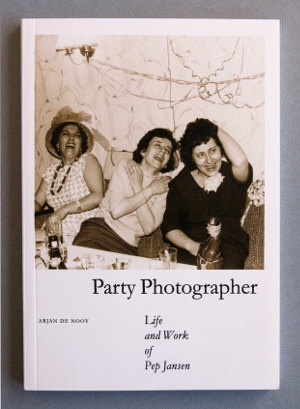
Look in the index to the hefty and seemingly authoritative volume Dutch Eyes: A critical history of photography in the Netherlands, and we see the filmmaker Jan Jansen (1904–1979); but the next name is the groovalicious Cor Jaring (b. 1936): the remarkable Pep Jansen (1931–1969) goes unmentioned. Kudos to Arjan de Nooy for rescuing this figure from obscurity, in Party photographer. The hedonistic hollandosphère does not end with Billy Monk: whether using a Land camera, Hasselblad or just a bakelite 127, the protean Jansen had a knack of capturing the Dutch at their most riotous (or sated).
Twenty-eight or so photos by Jansen, three of Jansen at work. The essential filler for the stocking that doesn’t already decorate your Festivus pole.
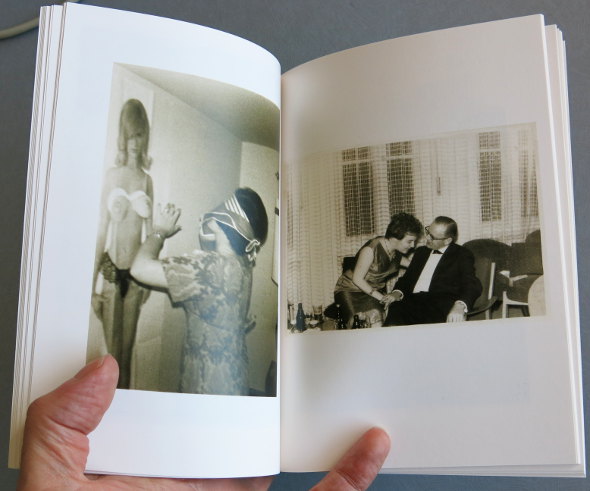
Arjan de Nooy. Party photographer: Life and work of Pep Jansen. The Hague: De Nooy Collection.
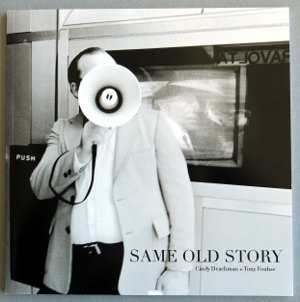
Tony Fouhse is best known to us non-Canadians for his blog “drool” (dubbed “dead” since September, but with old posts that are very much alive). He’s put out a number of slim photobooks; Same old story is unusual among them in showing older work, and being in B/W.
“These photographs were taken in Toronto, 1981–83” — and this is all that we’re told. I’d long lazily assumed that “America’s coonskin cap” was a placid expanse of sanity, but the photos show that Toronto strangeness long predated Rob Ford.
It’s a very slim paperback, but you get 29 photos, more than in some arty hardbacks. And there’s a story, too, by Cindy Deachman. Being utterly unfamiliar with Toronto, I don’t know to what degree the style reflects the language as spoken there and to what it’s stylized (cf Henry Green); I had to read the first page a couple of times in order to make sense of it but thereafter the lect clicked and I could enjoy it. Do the photos and text serve each other (even indirectly)? For me, no; but I enjoyed each independently, so no matter.
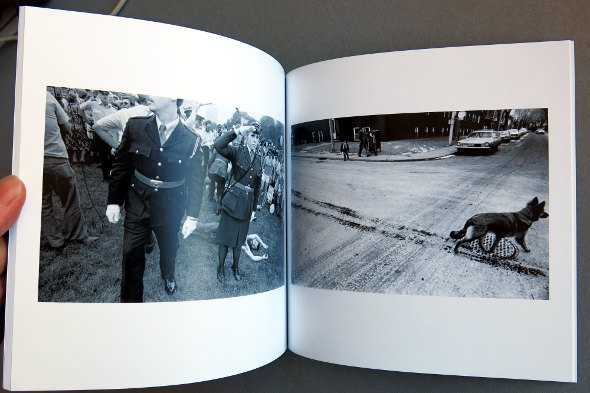
Cindy Deachman and Tony Fouhse. Same old story. Ottawa: Straylight Press. ISBN 978-0-9691684-5-4.
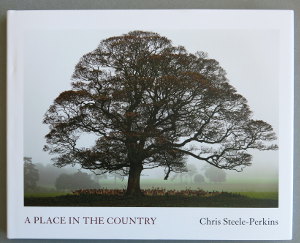
I heard some time ago that Chris Steele-Perkins would publish a photobook on the Holkham Estate; the name didn’t ring a bell and I vaguely supposed that this was the kind of estate that might have appeared in Survival programmes. But it’s instead that of Holkham Hall, a Palladian pile in Norfolk.
The front cover is somewhat staid, showing a tree that has just shed its autumnal leaves — ah, no, those aren’t leaves but deer. So that must be quite a tree. The house is of similarly giant scale; it’s not run by the National Trust or similar but instead by a Viscount and Viscountess, presiding over a number of teams for the maintenance and running of this and that: the fabric of the house and estate, of course, but also functions. Horses aren’t as prominent as I’d feared, but shooting and killing certainly are. (The squeamish should turn the pages carefully.) There are a number of more or less posed group portraits, done very well; but I prefer the far less formal material — particularly those of the public, at or near the beach.

Chris Steele-Perkins. A Place in the Country. Stockport: Dewi Lewis. ISBN 978-1-907893-62-8.
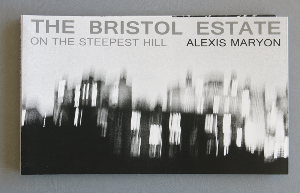
The Bristol Estate was put up on a hill behind Brighton in the mid-fifties; it looks rather like a trial run for campus accommodation a decade later, with added allotments. Alexis Maryon photographed it, and the result (spiral bound, fifty or so B/W photos, one per page) is out from Fistful of Books. You might expect that high-density low-income housing would look squalid and miserable but if so then you’d be wrong. It doesn’t even look shabby. Kids running around, people shopping and eating, congas outdoors: it’s pretty lively and friendly-looking. Nothing particularly stunning here, just a good-natured portrait of a place. While the printing looks zine-ish at first glance, it’s actually pretty good. I hope that a future Fistful of Books includes a collection of Maryon’s Newhaven photos.
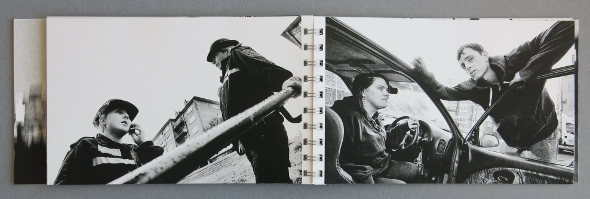
Alexis Maryon. The Bristol estate. Castle Douglas, Galloway: Fistful of Books. No captions.
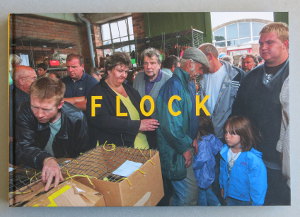
Ken Grant’s 2002 book The close season is still in print after 14 years (I think even remaindered), suggesting that Dewi Lewis overestimated the intelligence of the “photobook buying public”. This year two publishers bravely put out a new book of his work anyway.
Hereford had Britain’s last urban livestock market (we read), and when in 2009 Grant heard that it would close (in 2011) he started to go there and photograph it. Flock is the result. Many of the sixty-plus photos show people looking at the merchandise. (Poultry are particularly prominent.) There are splendid faces here. We also see auctions and sales, and the wider scene.
The working market has now moved out of town; and, to quote the “developer” of what’s now capitalized as the “Old Market”, once “developed”, this site “will include a Debenhams department store, six screen digital Odeon cinema, Waitrose food store and a variety of shops and restaurants.” Which sounds to me like a very last-century kind of gentrification.
The book is well produced, with good colour — except on a very few pages (half a dozen or fewer), where the colour is slightly odd. But maybe that was the way it looked.
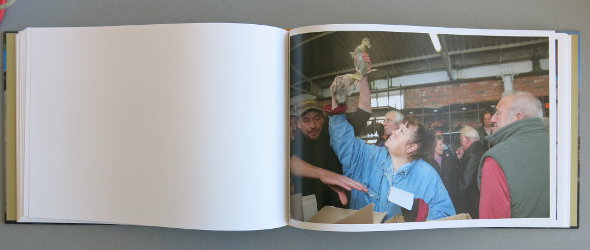
Ken Grant. Flock. Dublin: Artist Photo Books. ISBN 978-0-9927485-2-4.
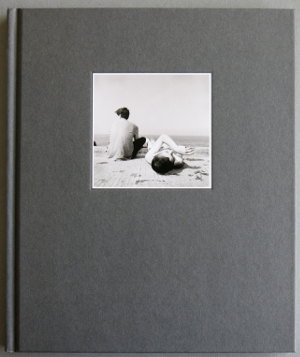
With about fifty square B/W photos of Liverpool and Birkenhead (1986–2010), Ken Grant’s No pain whatsoever is a lot closer than Flock to The close season. Liverpool’s industry and port are just about dead, and whatever is driving the city’s economy doesn’t seem to be hiring. (“In 2007,” Wikipedia helpfully tells us, “over 60% of all employment in the city was in the public administration, education, health, banking, finance and insurance sectors.”) And so there’s an unemployed class: fishing, waiting, burning plastic off wires to sell the copper (also in Peter Marlow’s Liverpool: Looking out to sea), smoking, catching rays, spending time with the family. The portrayal is sympathetic but clear-eyed. No captions and minimal text. (And if it worries you, the cover material is designed to pick up grease from your thumbs.)
Get a copy, and also one each of The close season and Marlow’s Liverpool while you’re about it.
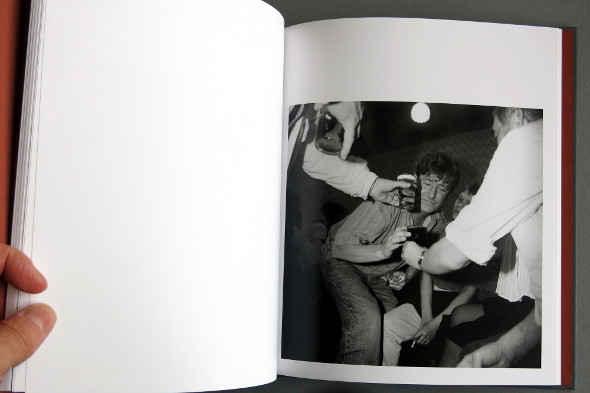
Ken Grant. No pain whatsoever. Stockholm: Journal. ISBN 978-91-981253-5-1.
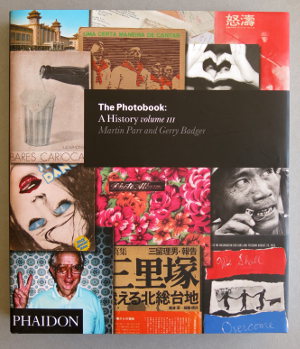
The first two installments of Parr ’n’ Badger were to photobook books what those of The godfather and Pirates of the Caribbean were to mafia and pirate flicks. Could the enterprise escape the Curse of the Third Episode?
It could. Parr’s combination of curiosity and (I infer) wealth led to new directions for exploration. The format is the same as it was in the first two books; if you liked it there, you’ll like it here too. A lot of the book is devoted to recent stuff that I thought had already had its fifteen minutes in the blogosphere, but enough of it hasn’t been. No matter how repellent the material (and right-wing propaganda is conspicuous here), Badger can be depended on to provide an interesting little read. (Not that the pair lack taste: this time, they include Takanashi’s Machi.)
Read more carefully, and one does start to wonder: Why mention all three editions of Gōzu Masao’s self-published In New York (p. 163) but not the bigger New York? If “It is difficult to see A Criminal Investigation being made in the same way had it been published in 1958–59″ (p. 163), then how is the book “a perfect re-creation of a 1950s or 60s Japanese photobook” (same page)? (It’s nothing like any 1950s or 60s Japanese photobook I’ve ever seen.)
Let’s not niggle, but don’t let the enthusiasm go to your head or anyway to your credit card.
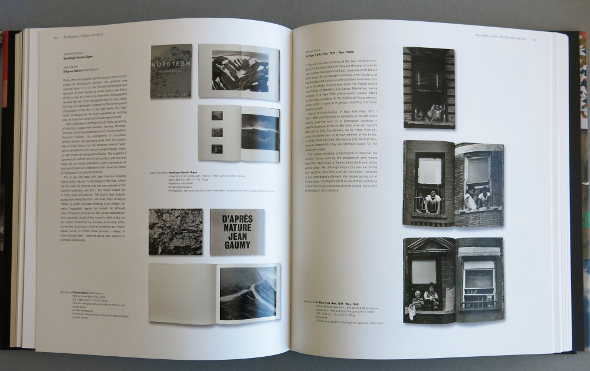
Martin Parr and Gerry Badger. The photobook: A history 3. London: Phaidon. ISBN 978-0-7148-6677-2.
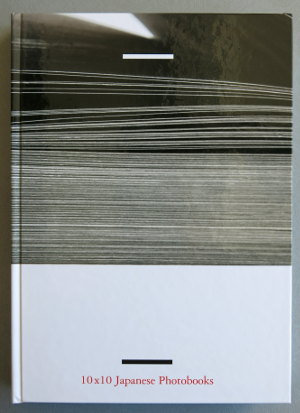
Twenty “specialists” were each asked to nominate ten Japanese photobooks for display either at ICP or on the interwebs. A couple of years later, the book of the show came out. For this, each of the twenty was asked to nominate one out of their ten as the superlativest.
So twenty books are profiled here. Two are by Moriyama (and about one and a half of these are American); none is by Araki or Suda. Whew, other people have inscrutable tastes: out of the twenty books profiled, fewer than half say anything to me. But a number are often praised, so clearly it’s my sensibilities that are at fault.
And some of the selections are most definitely worth exploring. A special tip of the hat to Nicolas Codron; while his ten aren’t all to my taste, none is expected, Iwamiya Takeji’s Sado (1962) is superb, and two obscurities I’d not heard of were easily worth the small sums I paid for them when they turned up at Yahoo Auction (and, predictably, nobody else bid for them).
In the back are an interesting interview with Hagiwara Akira and a perceptive essay, both of these in both English and Japanese. Book design and production are excellent.
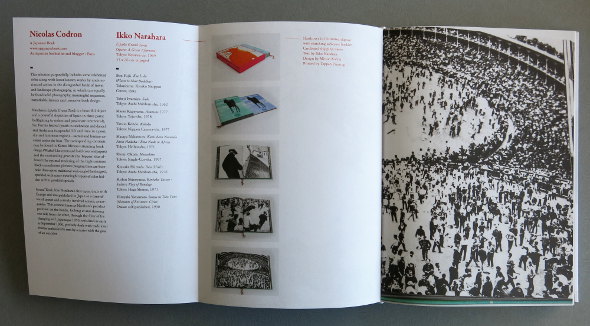
Matthew Carson, Michael Lang, Russet Lederman, Olga Yatskevich, eds. 10×10 Japanese photobooks. New York: 10×10 Photobooks. ISBN 978-0-692-20866-3.
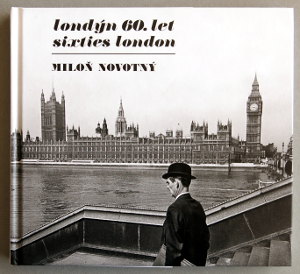
Miloň Novotný is perhaps best known as co-photographer of New York (1966); his book Londýn first came out (from Mladá fronta) a couple of years later. Eight thousand copies were printed, the new book’s chronology tells us, and they flew off the shelves. Presumably this retitled 2014 edition is closely based on the original, but aside from two or three obvious additions the relationship between old and new isn’t clear. The new book has about 68 B/W photos of London, one per page. There are Londoners avoiding the rain, enjoying the sunshine, people shopping in Carnaby Street (not quite yet a tacky tourist trap), gents wearing bowlers, nutters at Hyde Park corner, a pearly king, cricket, and the other expected subjects; but these are deftly done and there’s a lot more besides. (And can this be Georges Perec in the second photo?) Unfortunately there’s no mention of how Novotný was able to visit London; I wonder if other Warsaw bloc photographers were also given a fairly free rein in the west and produced comparable collections that are ripe for discovery.
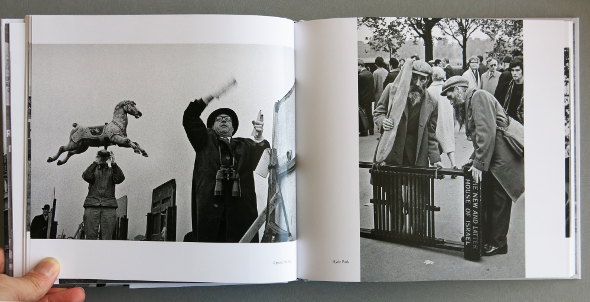
Miloň Novotný. Londýn 60. let = Sixties London. Prague: Kant. ISBN 978-80-7437-122-6. Placenames as captions; with a long essay about London by A G Hughes and a chronology, each in both Czech and English.
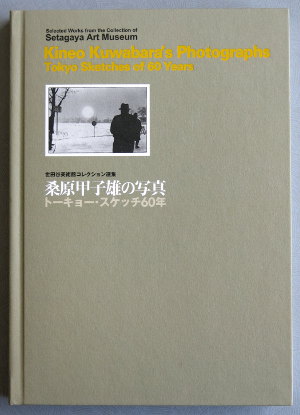
A highlight of the year was the Kuwabara Kineo show at Setagaya Art Museum. A generous selection of photos from the thirties to the nineties (with breaks when Kuwabara simply wasn’t taking photos), presented intelligently and with informative texts (very conveniently for my challenged and lazy self, in English as well as Japanese).
Here’s the book of the show. It’s compact; it isn’t the photobook that Kuwabara deserves. (A two-volume set that came out this year has a good selection of photos but [pace John Sypal] wretched design; and, if this matters, its captions and text are in Japanese only.) Still, the book of the show is (bilingually) informative and the plates aren’t impossibly small. When a good photobook does come out — or if you snag one or both of Tōkyō Shōwa jūichinen (Tokyo 1936) and Manshū Shōwa jūgonen (Manchuria 1940) put out by Shōbunsha in 1975 — then this will be a good reference companion.
This book was never retailed in the normal way; it’s available from the museum’s own shop: write to samshop○samuseum.gr.jp, replacing “○” with “@”. (Although there’s likely to be an assumption that the would-be shopper reads and writes Japanese, has a Japanese address, and has a Japanese bank account.)
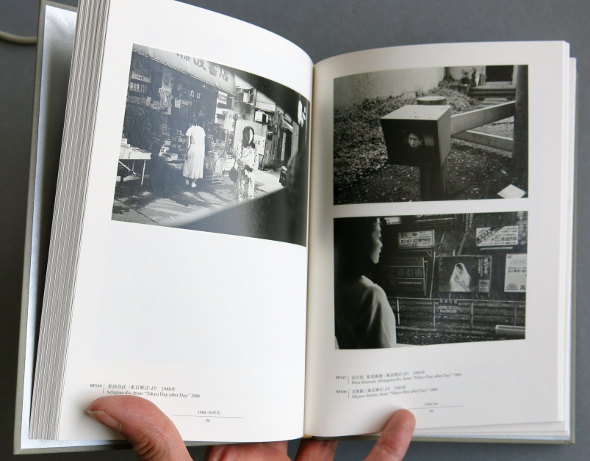
桑原甲子雄の写真 トーキョー・スケッチ60年 = Kineo Kuwabara’s photographs: Tokyo sketches of 60 years. Tokyo: Setagaya Art Museum.
So there you are. I hope that some seem appealing. Whether you buy two or twenty, I hope they live up to the promise.
Back to Rob Hornstra. Another good idea of his is the most overrated photobook of the year. I’d have at least one contender for this, but I’d concede that Quitonasto form Chanmair Mao Tungest did at least manage to make an impression on me. (Several impressions, one of them being that its aroma didn’t start to resemble that of the original.)
Ah, Quitonasto form Chanmair Mao Tungest doesn’t seem to have made that many best-of lists. Well then, the most overrated photobook of the year 2013: The holy bible. An amusing idea, executed without flair. (Anyone with an urge to rework an existing book might take a look at A humument for inspiration.) Still, the fact that Quitonasto and The holy bible made some impression(s) puts them ahead of a lot of polite, earnest photobooks that I picked up, flicked through and quickly put down at Tsutaya (Daikan’yama), Sōkyūsha, or elsewhere. The front covers of some of them appear in best-of lists.
I’m not eager to knock photographers (or photo-appropriators). But yet Anouk Kruithof’s « BUMMER! » is inspiring. So here’s my bummer: designs that screw up what could have been good photobooks. As one example, I give you Sawatari Hajime’s Showa 35, Japan = 昭和35年日本. It has an elegant cover (if this matters). Internally, over half of its double-page spreads are of single photos, every one of which is pretty much ruined by the gutter. (For examples on web pages that you’d expect to depict books flatteringly and appealingly, see here and here.) Which is a great pity, as the designer hasn’t managed to trash the photos to a point where you wouldn’t realize that the twenty-year-old Sawatari shows the Japan of 1960 as you’ve never seen it before.
And next year? Great things in the world of the introspective, revealing photobook! “Rizzoli to publish a book of Kim Kardashian selfies”; about which the Artist writes: “I mean every girl takes full pictures of their ass in the mirror… I might share some of them.”
Other 2014 lists here at Phot(o)lia. (And not to be missed: “The year in photobooks”.)
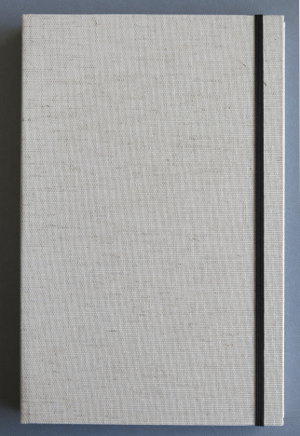
Nice roundup, Microcord. I am adding some of these to my list. Hopefully we can meet in 2015…
Your lists are fascinating too. Though I sometimes have a vague feeling that I should be interested in the selfies by Sherman and Morimura, the fact is that I’m not. But “Mangini Studio”? Love at first JPEG.
Yes, let’s meet up. Can you bring Sergie?
Thanks for this post (though my bank balance might not thank you) I’d not come across Coastline or the Transnistria book before but I’ve now had to purchase them. I’m interested in former Soviet Union photo books and Chinese stuff they stood out for me.
I also just got the catalogue for the Danziger NK exhibition, it’s probably the best NK photobook I’ve seen.
The soviet bus stops is definitely one of my favourites but attracts various mockery from people before they look through it!
Please keep up the good work.
Thanks for the comment.
I wonder where you got the Danziger N Korea catalogue, Online, it’s pretty elusive, or was when I last looked.
In https://microcord.wordpress.com/2012/12/28/top-japanese-photobooks-of-2012/ I mention two Japanese books about North Korea.
Good books about this or that aspect/area of what used to be the Soviet Union … we’re spoiled for choice. But one essential is Arnold van Bruggen and Rob Hornstra’s “The secret history of Khava Gaisanova”. (If you already have their “Atlas”, no matter: get this too, as much of it isn’t in the “Atlas”.)
I got the Danziger catalogue on Amazon (UK) of all places, however I snagged the last copy they had.
I’ll add the other books to my list thanks.
Bravo for addressing all the books you acquired. Give yourself some props for not having bought more. Unless you have an unlimited budget, I’m sure the exercise will make you a more effective buyer in 2015. But it must be difficult to resist the temptation to pick up something in the hopes that it gets better the more you look at it.
“Give yourself some props for not having bought more.” Thank you. I shall certainly tell this to Mrs microcord, the next time she complains after tripping over a pile on the floor.
The new book by Watabe is one of two (three?) that didn’t make the list because I got them too late; Rosalind Solomon’s “Them” is already on its way to me; and perhaps I should have added several from late in 2013. And of course I don’t mention all the older books that I also acquired. (I did get rid of a few, but too few.)
Your own list http://rephotographica-slade.blogspot.jp/2015/01/good-reads-2014.html is full of interest; I’ll reread it a little later.
[…] you Microcord for your always wonderfully opinionated posts on photography and […]
[…] One Year of Books Josef Chladek on his blog and FB: Virtual Bookshelf Bint PhotoBooks on Internet Microcord Dodge & […]